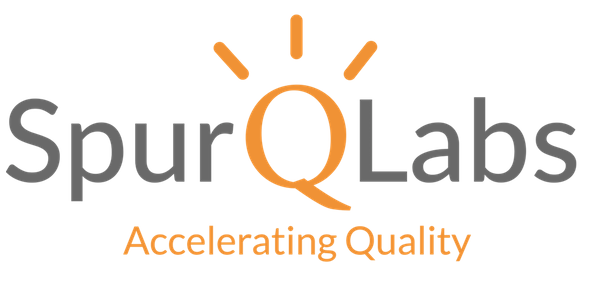Any test automation report, without screenshots, would look dull and will not provide enough information on where the test failed. If you add only screenshots, it will make the report information-rich. Now, if your tool has the capability to record the video as well, then it will be cherry on the top. A playwright is an automation tool that has these features integrated in-built. Here we will cover various types of screenshots that can be attached and how to record the video. This blog will help you to learn the steps to include Capture screenshots and videos in java playwright.
- Playwright contains the following inbuilt functionalities:

Here, we are exploring the functionality to capture the snapshots and how to attach them to the Cucumber report. You must have the Cucumber report set up in your framework in order to accomplish this.
Let’s, Understand first how to Capture screenshots and videos in java playwright.
1. Page Screenshot:
As you are all aware, we usually use this screenshot to attach what is visible on the screen for verification purposes.
public static List takeScreenShots() throws IOException
{
public static byte[] array;
long millisStart = Calendar.getInstance().getTimeInMillis();
array = page.screenshot(new Page.ScreenshotOptions().setFullPage(false).setPath(Paths.get("test-output/ScreenShots/" + millisStart + ".png")));
List output = new ArrayList();
output.add(array);
output.add(millisStart + ".png");
return output;
}
2. Full Page Screenshot:
If your test requires you to attach a screenshot of the entire page, top to bottom. So this method will guide you easily. The code below helps to take a snapshot of the entire page, no matter how long it is, because setFullPage is set to ‘true’.
public static List takeScreenShots() throws IOException
{
public static byte[] array;
long millisStart = Calendar.getInstance().getTimeInMillis();
array = page.screenshot(new Page.ScreenshotOptions().setFullPage(true).setPath(Paths.get("test-output/ScreenShots/" + millisStart + ".png")));
List output = new ArrayList();
output.add(array);
output.add(millisStart + ".png");
return output;
}However, now you can see that the full scrollable page has been captured in this step.

3. Element Screenshot:
So here, now you can also capture a screenshot of a specific element with the help of a playwright. In the below code, you can see that a locator path is sent as a parameter to the .screenshot() method.
page.locator("locator of that element").screenshot(new Locator.ScreenshotOptions().setPath(Paths.get("test-output/ScreenShots/screenshot.png")));Here, we can see that the screenshot has captured only the element given in the locator.

4. Attaching Screenshot to Cucumber Report:
Now, we are going to discuss how to attach these screenshots to the cucumber report.
The first step is to set up your framework for the cucumber report, and this blog does a great job of explaining how to do that. This will allow you to add a screenshot to the Cucumber report using the code below. In general, this code is placed in your after hooks (AfterScenario, AfterStep, After). In the code below, I recently added a current millisecond time as the file name. However, you can customize the file names to your choice.
public void screenshots(Scenario scenario) throws IOException
{
WebUtil.takeScreenShots();
long millisStart = Calendar.getInstance().getTimeInMillis();
scenario.attach(array, "image/png",millisStart+".png" );
}
Therefore, you can now view the Cucumber report with the screen attach to the report. while you click on the expand icon, You may see the screenshot as well.

5. Video Recording:
Now, here the playwright has the ability to record the video which will make it easier for the tester to understand their execution results. Then we’ll see how you fit that video into your report.
First, you must declare the context properties on your browser as shown in the below code. Or, you can simply update your context option where you can begin your context on the browser. Typically this method is called inside Before hooks.
public static BrowserContext RecordVideo() throws IOException
{
return browserContext = browser.newContext(new Browser.NewContextOptions().setRecordVideoDir(Paths.get("test-output/RecordedTestCase/")));
}Now the above code will help you to record the video and it’s going to execute the test. After that, it will automatically be stored on the path which is shown in the code. Moreover, you must see that the context of your browser is closed after it will be stored.
The below lines of code demonstrate how to convert a recorded video into bytes. These bytes can then be used to attach the recorded video to a report or perform other operations.
public static byte[] encodeVideo(Path path) throws IOException {
FileInputStream fis = new FileInputStream(String.valueOf(path));
ByteArrayOutputStream bos = new ByteArrayOutputStream();
byte[] b = new byte[1024];
for (int readNum; (readNum = fis.read(b)) != -1; ) {
bos.write(b, 0, readNum);
}
byte[] bytes = bos.toByteArray();
return bytes;
}After recording it from your project structure, you must use the following code to attach the video to the cucumber report. The tearDown method’s execution video attaching code is described below. This code will be easier to perform once the tearDown method has been completed and your video has been recorded and attached to the report. Normally, this teardown method is written using After hooks.
public void tearDown(Scenario scenario) throws IOException
{
browserContext.close();
Path path = page.video().path();
scenario.attach(WebUtil.encodeVideo(path),"video/webm", scenario.getName()+".webm");
browser.close();
playwright.close();
}Now, the screenshots and videos will appear in the cucumber report as shown in the picture below. This video will be available as part of the report.


Conclusion:
Here, we see that the playwright automation tool allows us to take several screenshots as needed. How to record Capture screenshots and videos in java playwright which can help you to identify failures’ underlying causes without having to look at the report itself.
6Swapnil is an SDET with 1+ years of hands-on experience in Manual, Automation, and API testing. The technologies I have worked on include Selenium, Playwright, Cucumber, Appium, Postman, SQL, GitHub, Java, and Python. Also, I love Blog writing and learning new technologies.

